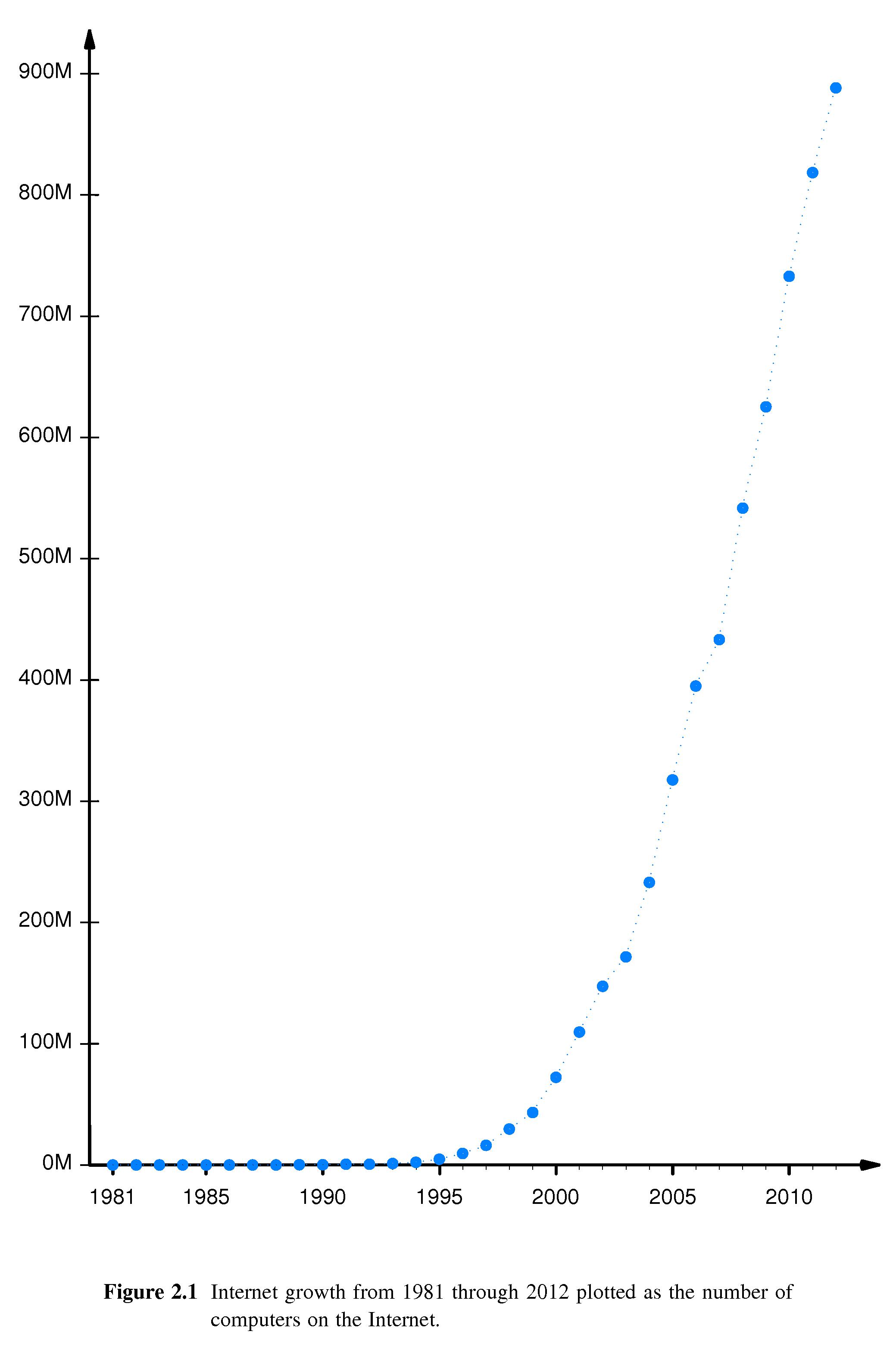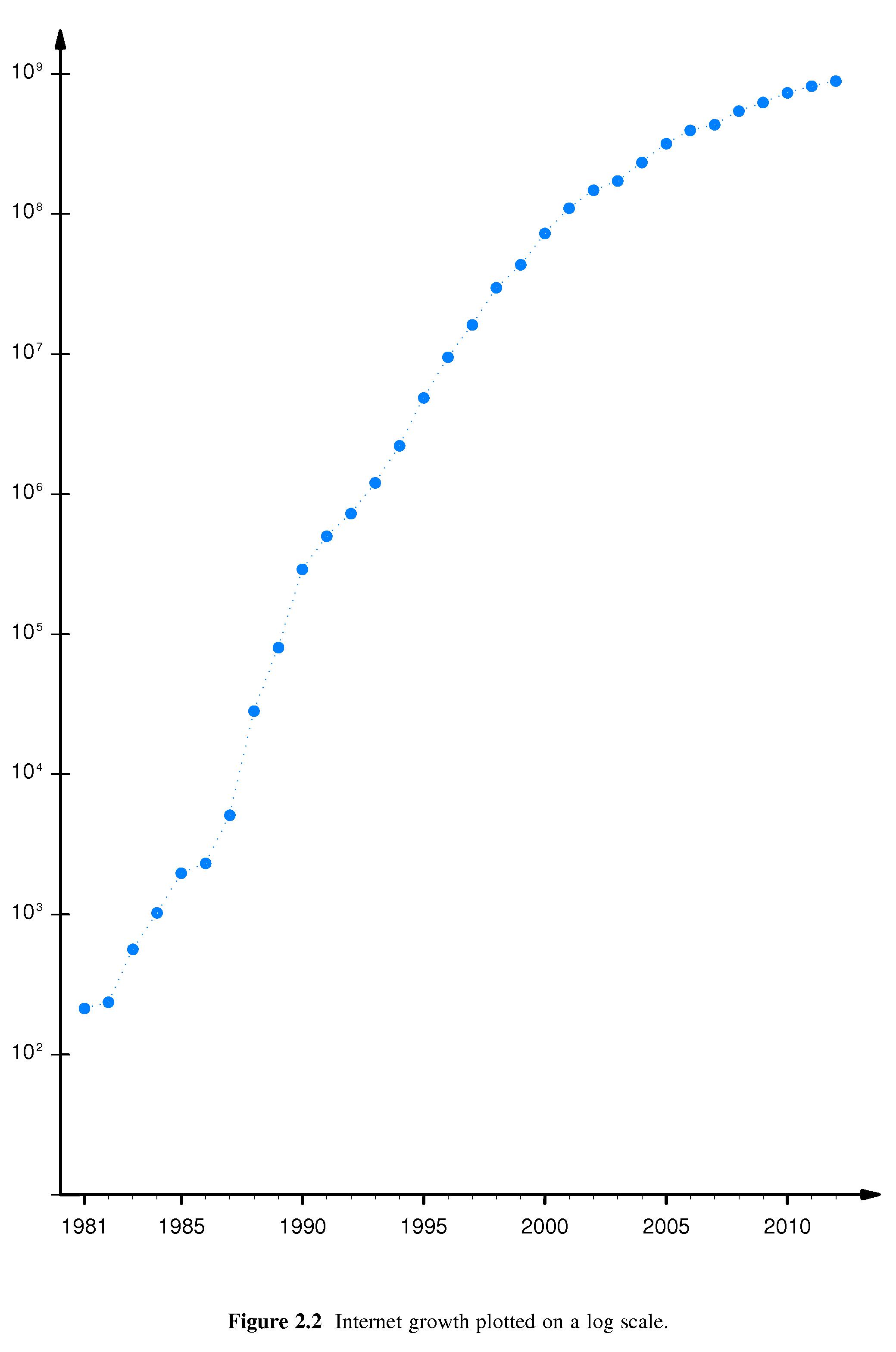- Be able to discuss the rate of growth of the Internet between the early eighties and 2010.
- Know a little about ARPANET.
- Understand why people started building ARPANET and the Internet.
- Know something about what kinds of services the Internet was able to support during various periods of time in its development. (For example, the way networks evolved from supporting simple text, then simple graphics, video clips, and eventually high definition video.)
- change to networking and Internet
- Internet motivation: centralized to distributed
- Internet applications
- communication paradigms
- programming interface
- The purpose of early forms of computer networks was to connect multiple users to a single large computer.
- People soon also wanted networks to allow sharing of peripherals such as printers and disk-based file systems.
- At the time that the Internet got its start, the sharing of powerful computers was important to researchers working at government laboratories. Computers were expensive and sharing was seen as a way to save money.
- The Department of Defense is also said to have been interested in developing a network that could continue to function even after being heavily damaged.
- ARPA put together a large group of the best and brightest individuals available. They created the ARPANET, and later the Internet.
- ARPANET was developed all through the 1970's and 1980's. Gradually, it became better known as the Internet. The military part, MILNET, was split off and the non-military part of the Internet was run by The National Science Foundation (NSF) for a while. At first it was devoted mainly to education and research. It became increasingly commercialized in the 1990's.


- Plots show that the number of hosts (computers) on the Internet approximately doubled every 9-14 months from 1981 through the present.
- What has been the relative growth in various areas of the world?
- Now that computing equipment is cheap and powerful, the original emphasis on resource sharing has shifted.
- The sharing of information (communication) on the Internet is now much more important that the sharing of hardware.


- Early on, most of the data on the Internet was text. Today much of it is high-fidelity audio and high-resolution video.
- There has been a similar progression of audio content.
- Telephone: Voice over IP (VoIP)
- Cable Television: Switch to digital and IP delivery
- Cellular: Switch from analog to digital (3G)
- Internet Access: Switch from wired to wireless (Wi-Fi)
- Data Access: Switch from centralized to distributed (P2P)
- Social Networking: Consumers, volunteer organizations
- Sensor Networks: Environment, security, fleet tracking
- High-Quality Teleconferencing: Business-to-business communication
- Online banking and payments: Individuals, corporations, governments
Social networking facilitates people's efforts to find others with shared interests.
- With the advent of cloud computing, we see increased emphasis on forms of sharing that were important when computer networks began: the use of simple devices to access centralized computing and storage resources.
- Location Independence: Portable wireless access devices allow users to change their locations, yet effortlessly maintain access to resources.
- The cloud provider backs up user data, and takes care of the maintenance of the cloud hardware and the software, which means less work for clients.
- Companies can be clients of cloud service providers, and these companies can benefit from the elasticity of cloud service - not required to pay continuously for service they only need from time to time.